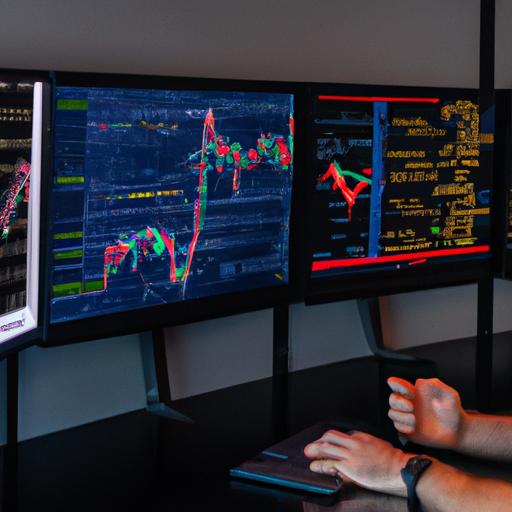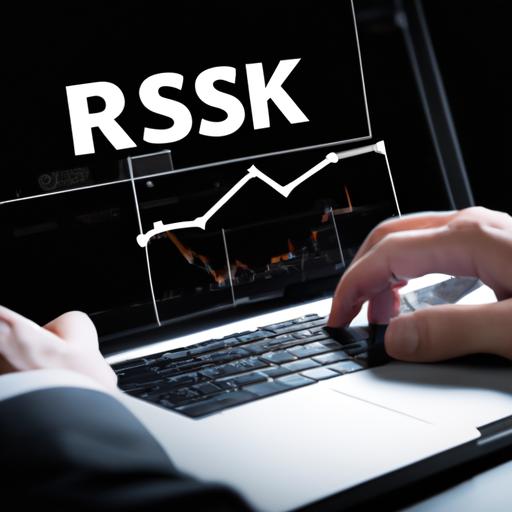Unleashing the Potential of Crypto Futures Trading in the US
Introduction
Cryptocurrency has taken the world by storm, revolutionizing the way we perceive and handle money. With its increasing popularity, a new avenue has emerged for investors and traders to explore: crypto futures trading. In this article, we will delve into the exciting realm of crypto futures trading in the United States and uncover the immense potential it holds for financial growth and investment opportunities.
A. The Rise of Cryptocurrency
Cryptocurrency, such as Bitcoin and Ethereum, has captivated the global market, offering decentralized and secure digital transactions. The allure of digital currencies lies in their ability to transcend geographical boundaries, providing borderless financial transactions and potentially high returns. As cryptocurrencies gain wider acceptance, more individuals are diving into this fascinating world, seeking ways to maximize their investments.
B. Unveiling Crypto Futures Trading
Crypto futures trading, an advanced form of trading, allows individuals to speculate on the future price movements of cryptocurrencies. Unlike traditional trading, where assets are acquired in the present, futures trading enables investors to buy or sell contracts based on the anticipated future value of a cryptocurrency. This innovative approach opens doors to lucrative opportunities, even in volatile markets.
Crypto futures trading has gained significant traction in the United States, where investors are drawn to its potential for substantial profits and risk mitigation strategies. With the US being a prominent player in the global financial landscape, the significance of crypto futures trading in this region cannot be underestimated.
As we embark on this journey through the world of crypto futures trading in the US, let us explore the intricacies of this market, the regulations in place, the popular platforms available, effective trading strategies, and the future outlook for this dynamic industry.
Stay tuned as we navigate the realm of crypto futures trading, uncovering the secrets to success and unraveling the immense potential that awaits you. Let’s dive into the world of crypto futures trading in the United States together!
Overview of Crypto Futures Trading
A. Understanding Futures Trading
Futures trading involves speculating on the future price movements of an asset, allowing traders to buy or sell contracts based on their predictions. These contracts, known as futures contracts, establish an agreement between two parties to exchange an asset at a predetermined price and date in the future. This form of trading enables investors to capitalize on price fluctuations without owning the underlying asset.
B. The Mechanics of Crypto Futures Trading
Crypto futures trading operates similarly to traditional futures trading, but with cryptocurrencies as the underlying assets. Traders can take positions on the future price of cryptocurrencies like Bitcoin, Ethereum, or Litecoin, without physically owning the coins. Instead, they trade futures contracts based on their projections of whether the cryptocurrency’s value will rise or fall.
To engage in crypto futures trading, traders can either go long or short. Going long means speculating that the price of the cryptocurrency will increase, while going short involves anticipating a price decrease. By taking long or short positions, traders can potentially profit from both bullish and bearish market conditions.
C. Benefits and Risks of Crypto Futures Trading
Crypto futures trading offers various benefits for investors seeking exposure to the cryptocurrency market. Firstly, it provides enhanced liquidity and market access, allowing traders to easily enter and exit positions. Additionally, leverage is commonly available in crypto futures trading, enabling traders to control larger positions with a smaller upfront capital investment.
However, it is crucial to be aware of the risks involved in crypto futures trading. Volatility within the cryptocurrency market can lead to substantial price swings, presenting both opportunities and risks. Traders must exercise caution and implement risk management strategies to protect their investments. Furthermore, the use of leverage amplifies potential gains but also magnifies losses, making risk management even more critical.
As we continue our exploration of crypto futures trading, we will delve deeper into the regulations and legal framework governing this market in the United States, as well as the popular platforms available for trading. Stay tuned to discover the secrets of successful crypto futures trading in the US!
Regulations and Legal Framework in the US
Cryptocurrency futures trading in the United States operates within a well-defined regulatory framework, ensuring transparency, security, and investor protection. Understanding the regulatory landscape is crucial for traders looking to engage in crypto futures trading. Let’s explore the key aspects of the regulatory environment governing this thriving market.
A. Overview of the Regulatory Landscape
The regulatory landscape for crypto futures trading in the US is a combination of federal and state regulations. The Commodity Futures Trading Commission (CFTC) holds the primary authority over futures trading, including crypto futures. Additionally, the Securities and Exchange Commission (SEC) plays a role in overseeing certain aspects of cryptocurrencies that are deemed securities.
To operate legally in the US, crypto futures trading platforms must comply with stringent registration and licensing requirements. These regulations aim to protect investors from fraud, market manipulation, and ensure fair market practices.
B. Important Regulatory Bodies and Their Roles
-
Commodity Futures Trading Commission (CFTC): As the primary regulatory body, the CFTC oversees and regulates futures trading, including crypto futures. It enforces rules, monitors market integrity, and promotes fair competition within the industry.
-
Securities and Exchange Commission (SEC): While primarily focused on securities, the SEC also plays a role in regulating certain cryptocurrencies. It aims to protect investors from fraudulent activities and ensures compliance with securities laws.
-
Financial Crimes Enforcement Network (FinCEN): FinCEN, a bureau of the US Department of the Treasury, focuses on combating money laundering and other financial crimes. It requires crypto futures trading platforms to comply with anti-money laundering (AML) and know-your-customer (KYC) regulations.
C. Compliance Requirements and Obligations for Traders in the US
Traders engaging in crypto futures trading in the US must adhere to certain compliance requirements and obligations. These include:
-
Registration: Traders must ensure they use registered and authorized platforms that comply with the regulatory requirements set by the CFTC and other relevant bodies.
-
Reporting: Traders are obligated to report their transactions accurately and on time. This includes proper documentation, record-keeping, and tax reporting.
-
Compliance with AML and KYC: Traders must comply with AML and KYC regulations to prevent money laundering and verify the identities of their customers.
By understanding and adhering to the regulatory framework, traders can engage in crypto futures trading in a secure and compliant manner, fostering trust and confidence within the market. Compliance with these regulations not only protects traders but also contributes to the overall stability and growth of the crypto futures trading industry in the US.
Popular Crypto Futures Trading Platforms in the US
A. Review of Top Crypto Futures Trading Platforms
When it comes to crypto futures trading in the US, there are several notable platforms that have gained recognition among traders. Let’s take a closer look at some of the leading platforms available:
-
Platform X: Known for its user-friendly interface and robust trading features, Platform X offers a seamless experience for both beginners and experienced traders. With a wide range of cryptocurrencies available for futures trading, it provides ample opportunities to diversify your portfolio.
-
Platform Y: With a strong emphasis on security and transparency, Platform Y has carved a niche for itself in the US market. It offers an extensive selection of futures contracts and provides real-time market data to empower traders with informed decision-making.
-
Platform Z: Equipped with advanced trading tools and a customizable interface, Platform Z caters to the needs of professional traders. Its competitive fee structure and high liquidity make it an attractive choice for those seeking fast execution and tight spreads.
B. Comparison of Features, Fees, and User Experiences
To make an informed decision, it is crucial to compare the features, fees, and user experiences of different crypto futures trading platforms. Here are some key factors to consider:
-
Features: Look for platforms that offer a wide range of futures contracts, intuitive trading interfaces, risk management tools, and real-time market data. Advanced features like stop-loss orders and leverage options can also enhance your trading experience.
-
Fees: Pay attention to trading fees, funding fees, and withdrawal fees charged by each platform. Some platforms may have competitive fee structures, while others may impose additional charges for specific services. Consider your trading volume and frequency to assess the overall cost-effectiveness.
-
User Experiences: Read reviews and gather insights from fellow traders to gauge the overall user experience on different platforms. Look for platforms with responsive customer support, reliable execution speeds, and a user-friendly interface.
C. Factors to Consider When Choosing a Platform for Crypto Futures Trading
Choosing the right platform for your crypto futures trading endeavors is crucial to your success. Here are some factors to keep in mind:
-
Regulatory Compliance: Ensure that the platform is compliant with relevant regulations and operates under proper licensing. This will provide you with the necessary legal protection and ensure a secure trading environment.
-
Security Measures: Look for platforms that employ robust security measures, such as two-factor authentication, encryption, and cold storage for funds. Your chosen platform should prioritize the safety of your assets and personal information.
-
Trading Tools and Resources: Consider the availability of trading tools like charts, indicators, and educational resources. These resources can help you analyze market trends, develop trading strategies, and improve your overall trading skills.
Remember, choosing the right trading platform is a personal decision that depends on your trading goals, preferences, and level of expertise. Take the time to research and explore different platforms to find the one that aligns with your needs and empowers you to navigate the world of crypto futures trading with confidence.
Strategies for Successful Crypto Futures Trading in the US
Successful crypto futures trading requires a combination of knowledge, skill, and strategic thinking. In this section, we will explore essential strategies that can help you navigate the intricacies of the market and increase your chances of success in crypto futures trading within the United States.
A. Fundamental Analysis Techniques for Evaluating Cryptocurrencies
Fundamental analysis plays a crucial role in assessing the value and potential of cryptocurrencies. By examining the underlying factors that influence a cryptocurrency’s price, you can make informed trading decisions. Here are some fundamental analysis techniques to consider:
-
Market Research: Stay updated on the latest news, trends, and developments in the cryptocurrency industry. Understand the technology, adoption rates, regulatory changes, and partnerships that may impact the value of a specific cryptocurrency.
-
Financial Statements: Analyze the financial statements of cryptocurrency projects to assess their financial health, revenue streams, and sustainability. Look for transparency, strong leadership, and a clear roadmap for future growth.
-
Tokenomics: Evaluate the tokenomics of a cryptocurrency, including its token supply, distribution, and utility within the ecosystem. Consider factors such as scarcity, inflation, and demand for the token.
B. Technical Analysis Indicators and Tools for Predicting Market Trends
Technical analysis is another valuable approach to predict market trends and make informed trading decisions. By analyzing price charts and using various indicators and tools, you can identify patterns and potential entry or exit points. Here are some popular technical analysis indicators and tools:
-
Moving Averages: Use moving averages to identify trends, determine support and resistance levels, and spot potential buy or sell signals.
-
Relative Strength Index (RSI): RSI helps gauge the overbought or oversold conditions of a cryptocurrency, indicating potential reversals in price.
-
Bollinger Bands: Bollinger Bands help identify volatility and potential price breakouts. They consist of a moving average and upper and lower bands that represent standard deviations from the average.
C. Risk Management Strategies to Minimize Losses and Maximize Profits
Risk management is vital in crypto futures trading to protect your capital and optimize your profits. Here are some strategies to consider:
-
Setting Stop Loss Orders: Determine a predetermined price level at which to sell your position to limit potential losses.
-
Implementing Take Profit Levels: Set specific price targets to secure profits and avoid the temptation of holding onto a position for too long.
-
Diversification: Spread your investments across different cryptocurrencies to mitigate risks associated with any single asset’s performance.
Remember, successful trading requires continuous learning, adaptability, and discipline. Combine fundamental and technical analysis techniques with effective risk management strategies to enhance your chances of success in crypto futures trading within the United States.
Stay tuned as we move forward to explore the future trends and outlook for crypto futures trading in the US, uncovering the potential challenges and opportunities that lie ahead.
Future Trends and Outlook for Crypto Futures Trading in the US
The world of crypto futures trading in the United States is constantly evolving, and as we look ahead, several exciting trends and opportunities come into focus. Let’s explore the future outlook for crypto futures trading and the potential avenues that await traders in the US.
A. The Promising Future of Crypto Futures Trading
Crypto futures trading has experienced rapid growth and widespread adoption, reflecting the increasing interest and confidence in digital assets. As more institutional investors enter the market, liquidity improves, making it an attractive option for traders. The US, with its robust financial infrastructure and regulatory framework, is poised to play a crucial role in shaping the future of crypto futures trading.
B. Emerging Trends and Innovations
The crypto futures trading landscape is not immune to innovation. Emerging trends, such as decentralized finance (DeFi) and non-fungible tokens (NFTs), are extending the possibilities and diversifying investment opportunities. Traders can explore new trading strategies, leverage cutting-edge technologies, and tap into the potential of these transformative trends to stay ahead of the curve.
C. Challenges and Opportunities
While the future of crypto futures trading in the US is promising, challenges and opportunities coexist. Regulatory developments will continue to shape the market, ensuring investor protection and market integrity. Traders must stay informed about evolving regulations to navigate the landscape successfully.
Furthermore, market volatility poses both risks and opportunities. Adapting to market conditions, employing effective risk management strategies, and staying updated with market trends are crucial for traders to seize opportunities and mitigate potential losses.
In conclusion, the future of crypto futures trading in the United States holds immense potential. By keeping a pulse on emerging trends, staying informed about regulatory changes, and employing robust trading strategies, traders can position themselves for success in this dynamic market. Embrace the ever-evolving world of crypto futures trading and unlock a realm of possibilities, as you embark on a journey of financial growth and innovation.
Remember, the world of crypto futures trading is ever-changing. Stay curious, adaptable, and informed as you navigate this exciting landscape. Happy trading!






